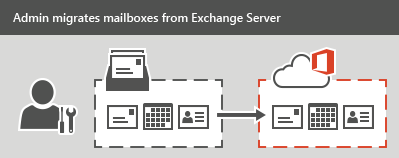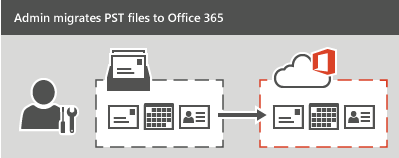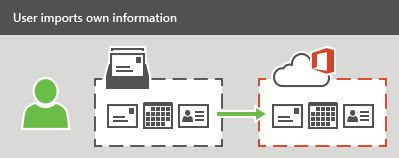-
Lets work together
Onsite or Remote Support
-
M-F 9:00 am - 5:00 pm
Call (519) 573-3759
Ways to migrate multiple email accounts to Microsoft 365 or Office 365
For migrations from an existing on-premises Exchange Server environment, an administrator can migrate all email, calendar, and contacts from user mailboxes to Microsoft 365 or Office 365.

There are three types of email migrations that can be made from an Exchange Server:
Migrate all mailboxes at once (cutover migration) or Express migration
Use this type of migration if you're running Exchange 2003, Exchange 2007, Exchange 2010, or Exchange 2013, and if there are fewer than 2000 mailboxes. You can perform a cutover migration by starting from the Exchange admin center (EAC); see Perform a cutover migration to Microsoft 365 or Office 365. See Use express migration to migrate Exchange mailboxes to Microsoft 365 or Office 365 to use the Express migration.
Migrate mailboxes in batches (staged migration)
Use this type of migration if you're running Exchange 2003 or Exchange 2007, and there are more than 2,000 mailboxes. For an overview of staged migration, see What you need to know about a staged email migration to Microsoft 365 or Office 365. To perform the migration tasks, see Perform a staged migration of Exchange Server 2003 and Exchange 2007 to Microsoft 365 or Office 365.
Migrate using an integrated Exchange Server and Microsoft 365 or Office 365 environment (hybrid)
Use this type of migration to maintain both on-premises and online mailboxes for your organization and to gradually migrate users and email to Microsoft 365 or Office 365. Use this type of migration if:
You have Exchange 2010 and more than 150-2,000 mailboxes.
You have Exchange 2010 and want to migrate mailboxes in small batches over time.
You have Exchange 2013 or later.
For more information, see Use the Microsoft 365 and Office 365 mail migration advisor.
Use the Import Service to migrate PST files
If your organization has many large PST files, you can use the Import Service to migrate email data to Microsoft 365 or Office 365.

You can use the Import Service to either upload the PST files through a network, or to mail the PST files in a drive that you prepare.
For instructions, see Overview of importing your organization's PST files.
Migrate email from another IMAP-enabled email system
You can use the Internet Message Access Protocol (IMAP) to migrate user email from Gmail, Exchange, Outlook.com, and other email systems that support IMAP migration. When you migrate the user's email by using IMAP migration, only the items in the users' inbox or other mail folders are migrated. Contacts, calendar items, and tasks can't be migrated with IMAP, but they can be by a user.
IMAP migration also doesn't create mailboxes in Microsoft 365 or Office 365. You'll have to create a mailbox for each user before you migrate their email.

To migrate email from another mail system, see Migrate your IMAP mailboxes to Microsoft 365 or Office 365. After the email migration is done, any new mail sent to the source email isn't migrated.
Have users import their own email
Users can import their own email, contacts, and other mailbox information to Microsoft 365 or Office 365. See Migrate email and contacts to Microsoft 365 or Office 365 to learn how.
